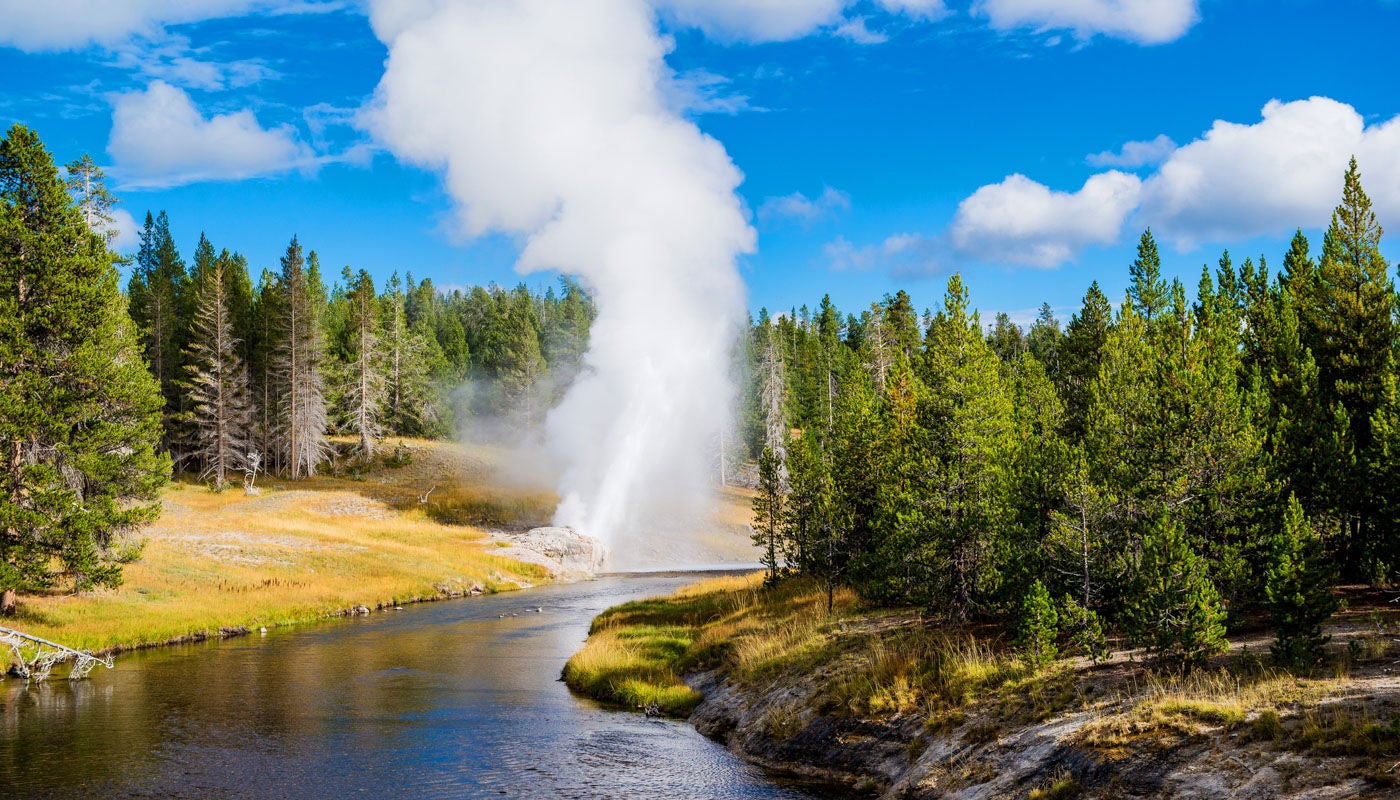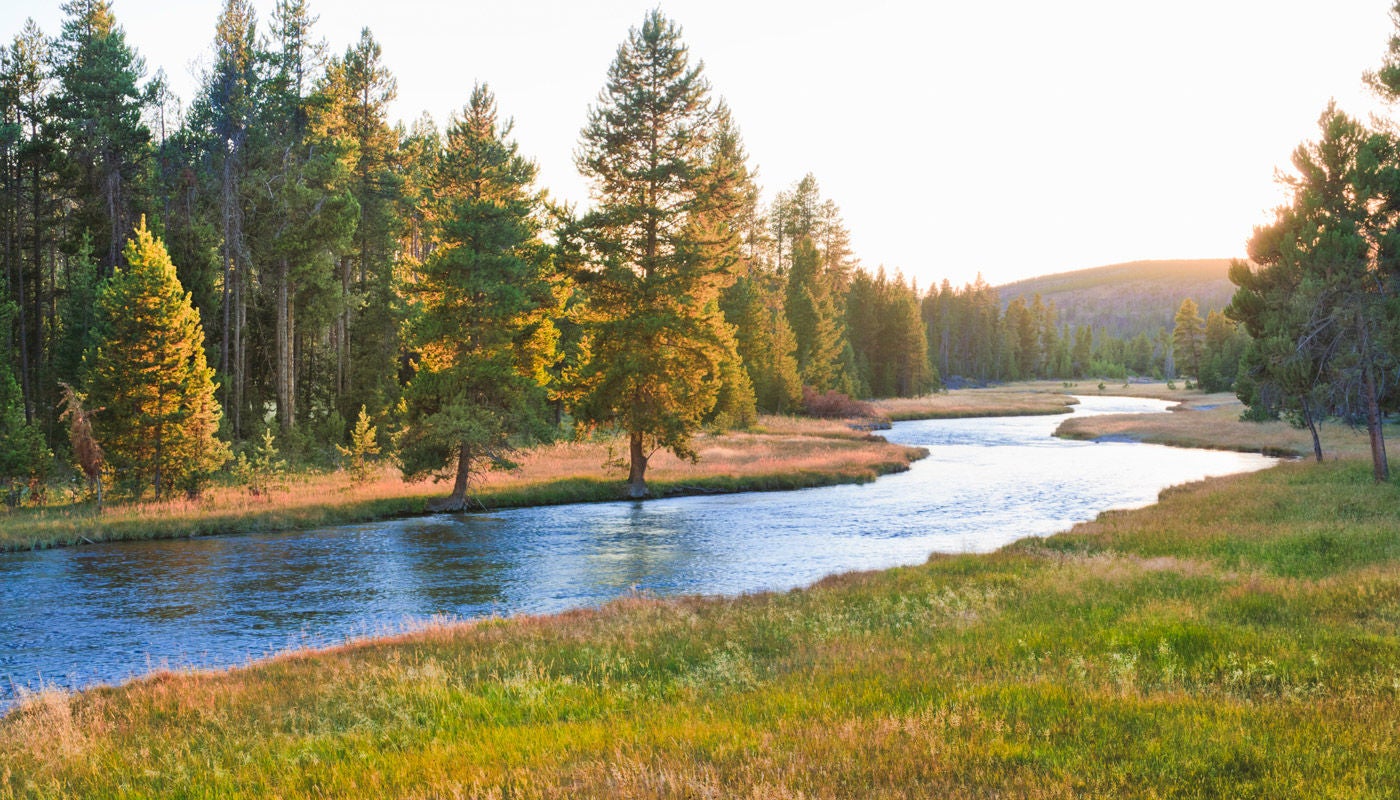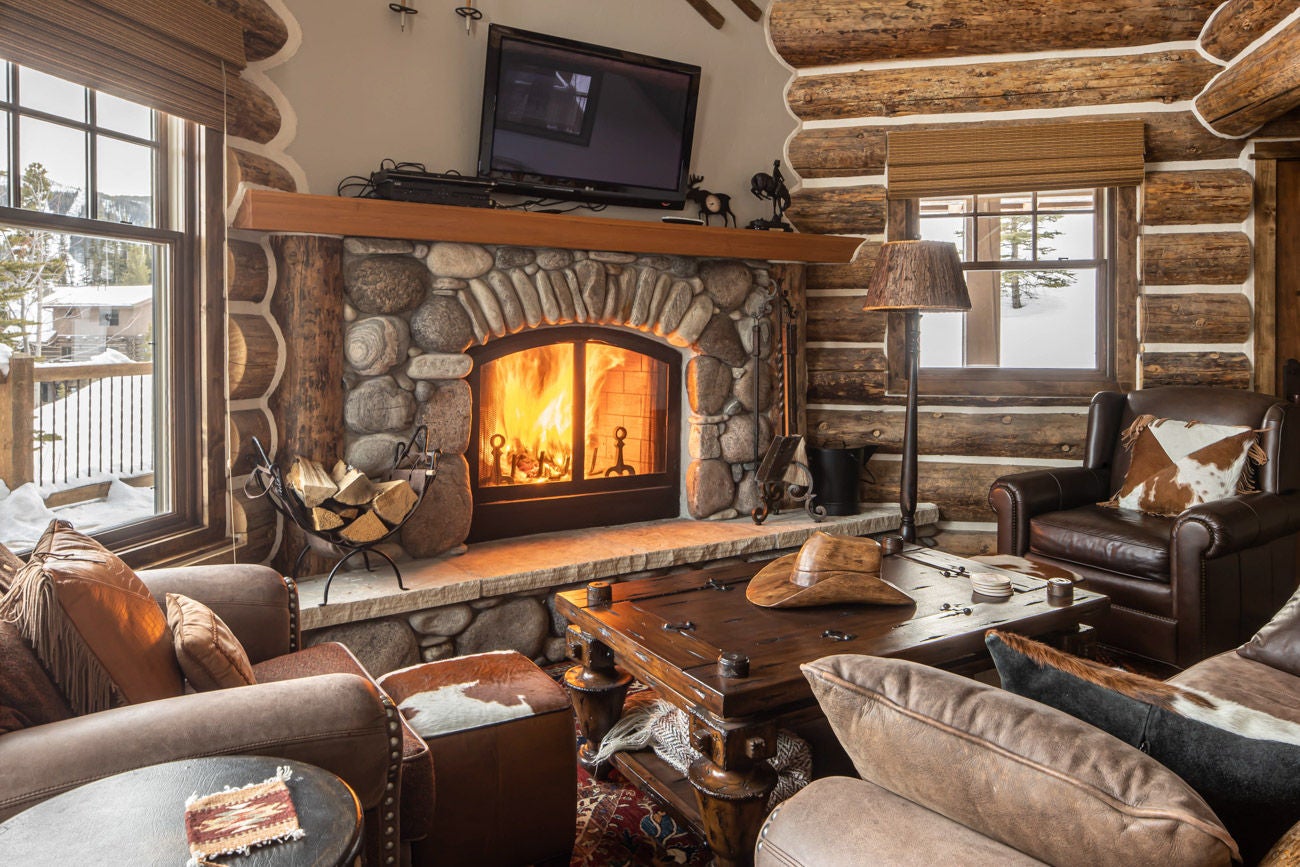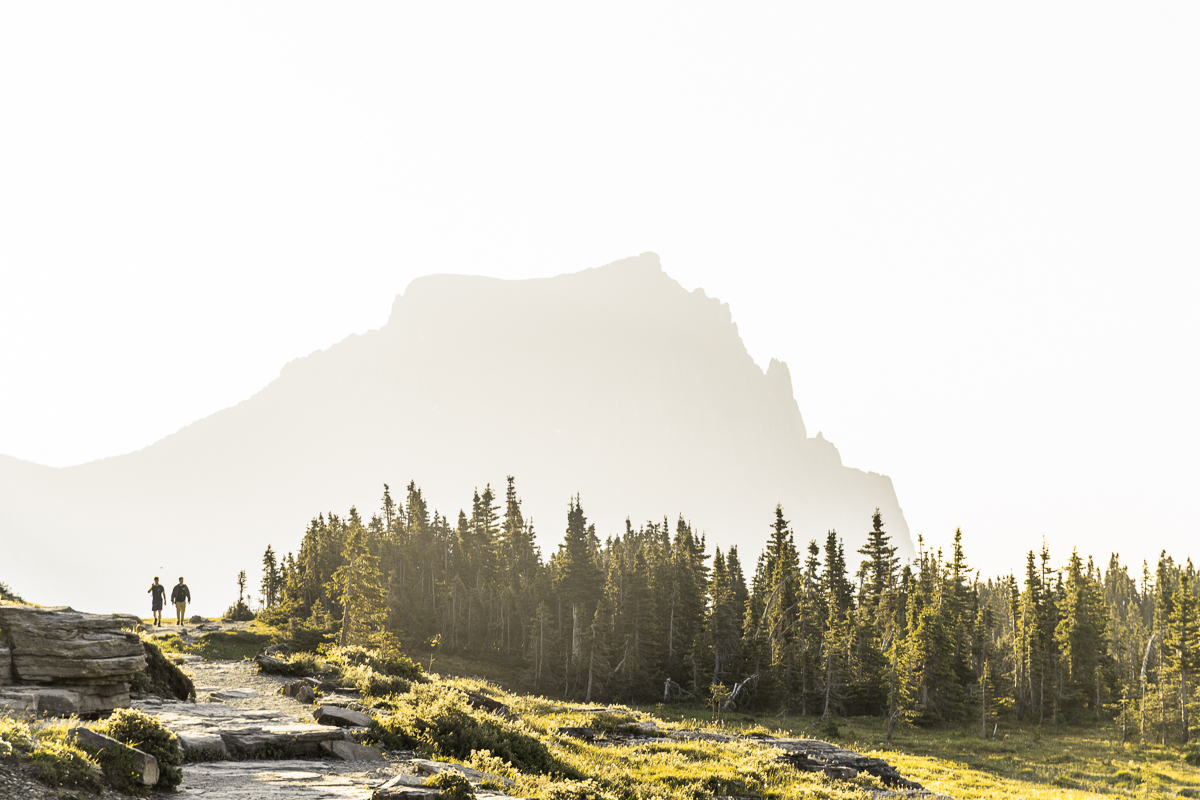In 1916, the National Park Service was established to protect and oversee America's 35 national parks and monuments, and those yet to be established. Yellowstone National Park celebrates its 150th anniversary this year—making it the country's first national park! To commemorate this significant milestone, Natural Retreats is taking a look back at some of Yellowstone's unique features and history.
In particular, we’ll explore the fire lookout towers in Yellowstone that are scattered throughout Montana, Wyoming, and Idaho. These structures were once essential for monitoring and fighting wildfires in the park, but today they offer tourists a one-of-a-kind view of the national park. So if you're visiting Yellowstone this fall, be sure to check out one of these historic fire lookout towers!

Yellowstone National Park: An Exceptional History of Lookout Fire Towers

![THESE TOWERS ALSO PROVIDED A BASE OF OPERATIONS FOR FIRE LOOKOUTS. [PHOTO CREDIT: ORVILLE "BUTCH" BACH] Lookout station on Observation Peak;
Orville "Butch" Bach;
1975](/adobe/dynamicmedia/deliver/dm-aid--7345d6cc-b071-4782-b9c1-f757396bb4eb/hero-4.jpg?preferwebp=true&quality=85)
FIRE TOWERS PROTECTED YELLOWSTONE
Fire lookout towers were an essential part of fire management in Yellowstone National Park. Placed in strategic locations throughout the park, these towers provided a 360-degree view so fire lookouts or fire watchers (sometimes called “Freaks on Peaks”) could spot smoke or flames as quickly as possible—now, aircraft and ground monitors can be sent to the area to investigate.
In addition to serving as an early warning system, the towers also provided a base of operations for fire lookouts. Equipped with radios and other communications equipment, fire watchers could coordinate their efforts and share information from the fire lookout towers to firefighters on the ground. The towers were also used to monitor weather conditions, which could help predict how a fire might spread.
By keeping a close watch on the park, the fire lookout towers played a vital role in protecting Yellowstone's natural resources for many years.
—
Originally, 16 fire towers were proposed throughout the park to ensure a good understanding of the entire 2.2 million-acre landscape. While Yellowstone National Park had as many as a dozen towers at one time, ranging in elevation from 5,000 to over 10,000 feet, they were not staffed year-round.
Fire lookouts were typically occupied by one person who was responsible for monitoring the surrounding area. With roughly five manned lookouts throughout the park, the others were only used when necessary during peak fire season.
![JACK KEROUAC WROTE POEMS AS A FIRE WATCHER. [PHOTO CREDIT: JOHN COHEN GETTY IMAGES] T1401440_04](/adobe/dynamicmedia/deliver/dm-aid--0d3c5a99-c062-4f57-897d-a92c8f73397a/kerouac-jack-credit--john-cohen-getty-images-.jpg?preferwebp=true&quality=85)
![BRITISH PRIME MINISTER MARGARET THATCHER WORKED AS A FIRE LOOKOUT. [PHOTO CREDIT: WIKIMEDIA COMMONS] BRITISH PRIME MINISTER MARGARET THATCHER WORKED AS A FIRE LOOKOUT. [PHOTO CREDIT: WIKIMEDIA COMMONS]](/adobe/dynamicmedia/deliver/dm-aid--6a130bf5-54ba-41ff-948c-f8ed990a65b9/margaret-thatcher-credit-wikimedia-commons.jpg?preferwebp=true&quality=85)
FAMOUS FIRE WATCHERS
Fire lookout towers were once a staple of the American landscape—during their peak (no pun intended), nearly 8,000 towers dotted the country. Many of the original fire lookout towers were staffed by men and women who spent their summers living in remote locations, often with no running water or electricity. Despite the challenges, many people found the experience to be both rewarding and romantic.
What many people don't know is that some of the most famous names in history got their start working as fire lookout tower employees.
Renowned American writer and poet, Gary Snyder, spent time working as a fire lookout at Crater Mountain in 1952, writing the poem “Mid-August at Sourdough Mountain Lookout.” Later, he and another writer convinced Jack Kerouac to take up a post in Washington state.
Now a famous author for his novel “On the Road,” Kerouac spent 63 days working as a fire lookout in Washington state. During this time, he planned to write endlessly in solitude but was only able to pen a few journal entries, some poetry, and a letter to his mother. However, his experiences in the Northwest helped him write two novels entitled, “The Dharma Bums” and “Desolation Angels.”
Even British Prime Minister Margaret Thatcher worked as a fire lookout in Grantham during the Second World War.
While the number of fire lookout towers has dwindled over the years, their historical importance remains as strong as ever.
![SHERIDAN LOOKOUT TOWER IN YELLOWSTONE. [PHOTO CREDIT: RG JOHNSSON] Mt Sheridan fire lookout;
RG Johnsson;
1965](/adobe/dynamicmedia/deliver/dm-aid--396c1509-b0fd-4d33-b8ef-b245b0a597bb/sheridan-lookout-tower-image-credit-rg-johnsson.jpg?preferwebp=true&quality=85)
![MT. WASHBURN IS THE ONLY TOWER ACCESSIBLE TO THE PUBLIC. [PHOTO CREDIT: JIM PEACO] Mt Washburn fire lookout;
Jim Peaco;
September 1992](/adobe/dynamicmedia/deliver/dm-aid--7c63a82f-0fc5-434b-b2ac-f78d47e69919/mt-washburn-fire-tower-photo-credit-jim-peaco.jpg?preferwebp=true&quality=85)
FIRE TOWERS TODAY
Today, modern technology has changed the role of the fire lookout occupation. With high-tech weather computers, satellite imagery, and aircraft radars and monitors, manned lookouts throughout Yellowstone have primarily become a thing of the past.
High atop Dunraven Pass is the last remaining full-time, resident fire tower in the park—the Mount Washburn Fire Lookout. It is staffed seven days a week from mid-June to mid-September.
Roughly four towers remain, including Washburn, Sheridan, Pelican, and Observation. While Washburn is only used for fire management, the other buildings are used for different services in the park, like patrol cabins or to maintain the integrity of the historic structures—some of which are over 90 years old.
The fifth remaining tower would have been Mt. Holmes, but it tragically burnt down in 2019 after being struck by lightning during a severe thunderstorm. Holmes maintained its historic role as one of Yellowstone National Park’s staffed lookout stations until 2007.
ACCESSIBLE FIRE TOWERS IN YELLOWSTONE
Fire lookout towers are some of the most popular tourist destinations in national parks around the U.S. Standing atop one of these towering structures, visitors can enjoy stunning views of the surrounding landscape. Each tower offers its own unique perspective, and all are well worth a visit.
However, not all lookout towers are open to the public.
In fact, Mt. Washburn is the only tower accessible to the public in Yellowstone and requires a 3-mile hike up to reach it at over 10,000 feet elevation. Keep in mind, the trailhead can be found in two places on Dunraven Pass and is only accessible in the summer. Along the way, you will pass slopes filled with wildflowers and possibly see various wildlife, but eventually, you’ll end up at the mountaintop with views as far out as 20 to 50 miles.
So whether you're interested in modern-day fire management or simply want to enjoy a bird's eye view of Yellowstone, be sure to check out this lookout tower. And add a few of these popular attractions to your list when planning your next trip to other national parks.
![TOWERS ARE AN INVALUABLE TOOL FOR NAVIGATING AS HIKER. [PHOTO CREDIT: RG JOHNSSON] Mt Holmes fire lookout;
RG Johnsson;
1965](/adobe/dynamicmedia/deliver/dm-aid--01519ff4-ce3a-4b89-93a7-83955ab5be65/mt-holmes-credit-rj-johnsson.jpg?preferwebp=true&quality=85)

FIRE TOWERS HELP HIKERS
Fire lookout towers were once a staple of the American wilderness, providing an essential service for both firefighters and hikers alike. Today, many of these towers have been abandoned and left to decay, but they still offer a unique and interesting way to view the landscape.
For hikers, fire lookout towers can provide an excellent vantage point for orienting oneself in the wilderness. By climbing to the top of the tower, hikers can get a panoramic view of the surrounding area, allowing them to plan their route more efficiently.
Additionally, many fire lookout towers are located in remote and inaccessible areas, providing hikers with a sense of exploration and adventure. Although they may be few and far between, fire lookout towers can still be an invaluable tool for navigating through the wilderness.
VISIT YELLOWSTONE IN THE FALL
It’s best to visit Yellowstone in the fall if you are looking to experience the “Fall Elk Rut”—a spectacular mating ritual between elk—the Aspen leaves changing colors, and exceptional fishing conditions. As the park quiets down and the crowds thin out, this national park becomes one of the best places in the world to see wildlife, like bears, bison, elk, wolves, pronghorn, bald eagles, and so much more.
With the cool, crisp days and clear autumn nights, there is no better time to visit one of America’s most beautiful national parks.


PLACES TO STAY NEAR YELLOWSTONE
Here are Natural Retreats’ recommendations on where to stay when visiting Yellowstone in the Fall:
- Big Sky Lookout Towers – Beehive Basin View>>>
- Big Sky Lookout Towers – Lone Peak View>>>
- Powder Ridge Cabin – 12 Manitou>>>
- Powder Ridge Cabin – 9A Red Cloud>>>
- Beehive Basin Chalet>>>
- Mountain Valley Estate>>>
With fall just around the corner, there’s no better time to plan your trip! Mark the incredible scenery, wildlife, and views of Yellowstone National Park off your bucket list this year. And if you need help, Natural Retreats offers stunning vacation rentals near some of the best fire lookout towers in Yellowstone. Book your trip with us this fall and experience all that this magnificent park has to offer.
Planning a trip to Yellowstone? Make sure to capture your incredible adventure along the way—tag us on social media @naturalretreats and use the hashtag #TravelOn



